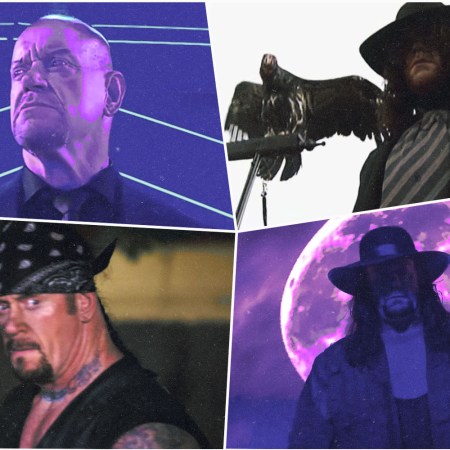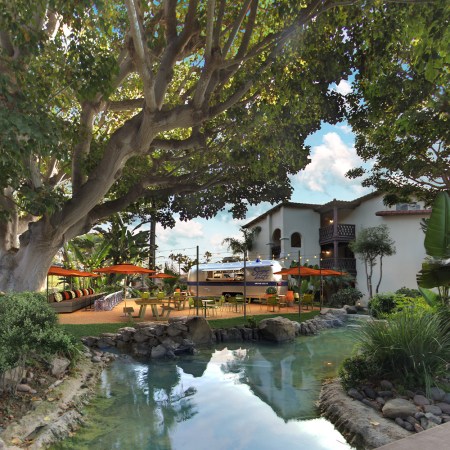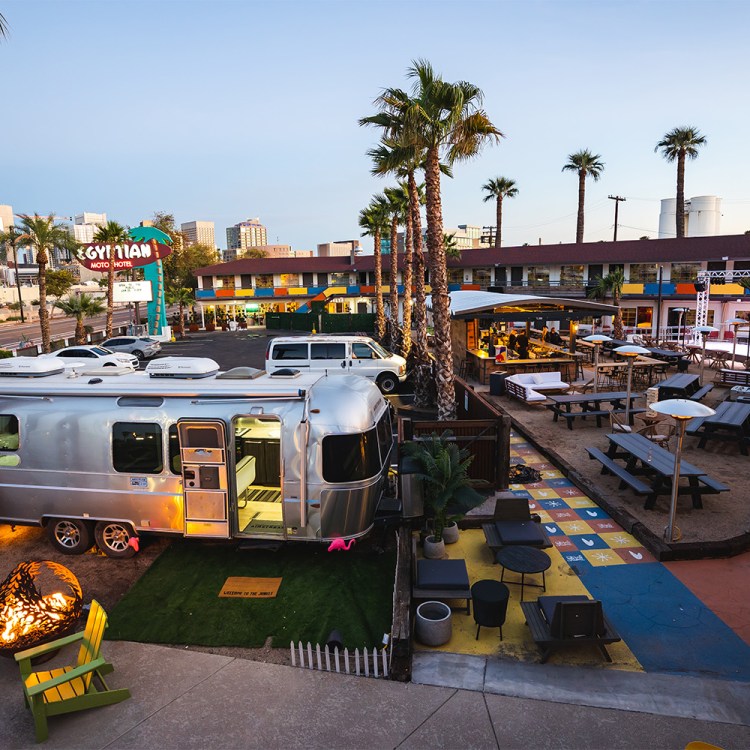Subliminal Projects, Shephard Fairey’s tiny Echo Park gallery, was filled with stylish punks of a certain age on a recent Saturday evening in April. The fenced-in back parking lot was crowded with latent piercings, tattoos and black leather, making it clear that these weren’t your typical gallery patrons. There was something comforting about encountering the gentle giants of bygone Los Angeles art scenes, now content to gather while it’s still light out and look on approvingly as one of their own gets her roses for preserving their counterculture. Wine and beer were available at a makeshift bar, but most people were waiting in a different line, eager to talk with photographer Melanie Nissen and have her sign copies of her glossy new photo book, Hard + Fast.
Dubbed “LA punk’s house photographer” by the Los Angeles Times, Nissen was not just an influential image-maker, but also the co-founder of Slash magazine, along with then-partner Steve Samiof. Her most famous shot, perhaps, is a photo of Darby Crash of the Germs and Exene Cervenka of X scowling on a dirty rooftop, a perfectly un-posed, unpretentious image full of the same insolent energy that drove the entire scene. Now, many decades after the scene’s inception (and Slash’s three-year tenure from 1977 to 1980), Nissen has released a book full of her visceral, in-the-moment photos — and that image is on the cover. Dubbed Hard+Fast, which is, in her own words, “how I felt about the music,” the art book officially debuted in February of this year, but as it circulates through LA, music fans are just beginning to grasp how ahead of her time Nissen was.

When she was capturing LA’s iconic punk scene in the late ‘70s, Nissen had no sense that the eventual importance of her photos would lead to a party at an influential gallery — or the photo book itself. Back then, it didn’t feel like counterculture to her, even if photographing rockers as they breezed across now-defunct stages definitely wasn’t normal life, either. “It never felt historic or life important, it all went pretty fast,” Nissen told InsideHook. “I worked a full-time job and was raising my daughter. Going out to shows every night, having my camera permanently around my neck, going to places like the Tropicana, Dukes, Starwood, Whisky, The Masque etc. was not my daily life at all.”
Few of those ’70s venues and bars captured as the backdrop in plenty of Nissen’s photos are still around, and even fewer have the caché that frequent musical guests used to bestow. It’s still something of a wonder that this self-proclaimed introvert made her way in that chaotic, still-emerging scene. First inspired to get into photography as a young mother documenting her child, Nissen began studying photography at ArtCenter College of Design, but dropped out after a year and a half due to the tricky finances of childcare and tuition. Eventually though, the LA native found her place as someone drawn to the outsider energy and welcoming ethos of those initial days of early punk. In some ways, her camera was her ticket in — a safety net.
“It was good for me to have a creative purpose,” she said. “It was a great way to hear the music and see it through my viewfinder. Very up close and personal. In spite of being an introvert, I learned how to shoot live bands and get to the front of the stage.” She cites the very first issue of Slash as one of the best moments working on the magazine and remembers how natural it felt. “The first issue with Dave Vanian from The Damned on the cover was such a rush,” she said. “When Steve designed the logo, I brought home the photo, and we put them together for the first time. We both knew immediately that we had our first cover and direction for the magazine.” The throughline of Nissen’s influence is easy to trace, as rapper Playboi Carti recently recast himself as Vanian for his own album cover, bringing the decades-old shot into the modern consciousness.

Plenty of the shots in Hard + Fast are taken from the best issues of Slash, but others are previously unseen, photos that had been sitting in boxes in Nissen’s garage all these years and are being unearthed for the first time. Credit is due to publisher John Bakasetas for coaxing Nissen into collecting her work into a book. “Every time he would come to the States he would always ask me if I would do a book,” she remembered. “My answer was always no, I wasn’t interested. One day I gave in and thought, ‘What the hell, it’s now or never.’ The process was long and tedious. Going through old dirty boxes, finding photos that weren’t trashed, then getting everything scanned and trying to make sense with what I had left. Emotionally it was very nostalgic but fun to see everyone again. I remember all their faces.”
Now that punk has been ingrained into the ethos of fashion’s neverending cycles, some of the figures from the scene’s early days have a hard time with the younger generation’s reblogged approach to their history — but not Nissen. “The reinvention of punk will always evolve and be interesting for me,” she said. “I like how things get reworked, scrambled and modernized. I think it’s influenced my taste and work forever. It was such a creative time with so little bullshit. The LA punk scene was a generous one. I never felt or saw any discrimination; I think you see a wide variety of people in my book, and that’s how it was. I hope I was able to communicate what the bands, music, fans, humor and diversity of the scene felt like from my photos.”
Nissen’s favorite images were always those taken in the context of Los Angeles, with the scenes of the city as a backdrop for punk’s main characters. “Tomata Du Plenty yelling into a pay phone on the street, or Tommy Gear in front of the picturesque Firefly,” she remembered, citing her favorite scenes. “Tommy Gear getting ready to plant one on the guy selling newspapers on the street. The Weirdos in an old pool hall and in front of a Pioneer chicken stand in all their splendor, always the mix of the street with punks.”
This article was featured in the InsideHook LA newsletter. Sign up now for more from the Southland.






















